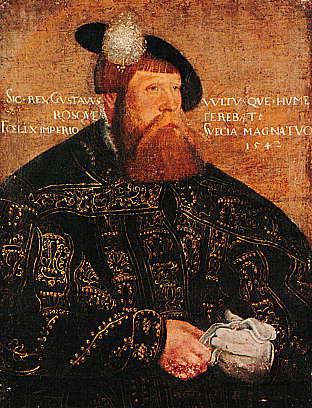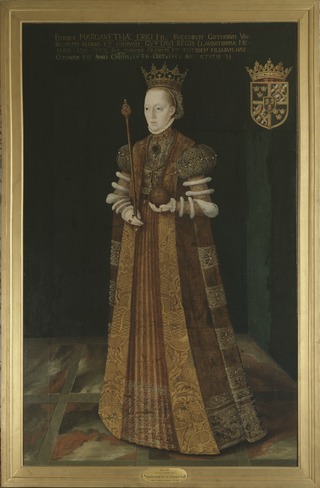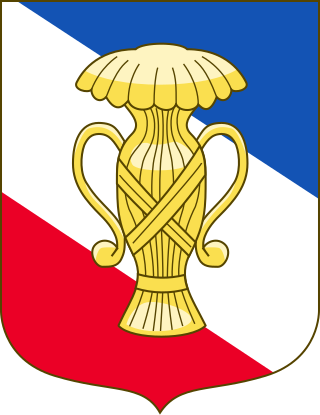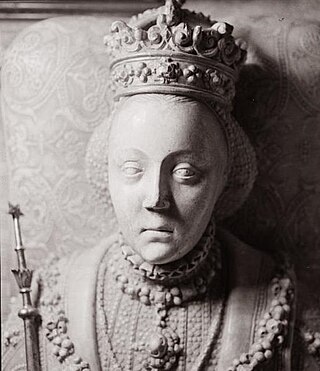| Years in Sweden: | 1578 1579 1580 1581 1582 1583 1584 |
| Centuries: | 15th century · 16th century · 17th century |
| Decades: | 1550s 1560s 1570s 1580s 1590s 1600s 1610s |
| Years: | 1578 1579 1580 1581 1582 1583 1584 |

Events from the year 1581 in Sweden
| Years in Sweden: | 1578 1579 1580 1581 1582 1583 1584 |
| Centuries: | 15th century · 16th century · 17th century |
| Decades: | 1550s 1560s 1570s 1580s 1590s 1600s 1610s |
| Years: | 1578 1579 1580 1581 1582 1583 1584 |

Events from the year 1581 in Sweden
The year 1581 was marked by several important events that shaped the course of Swedish history:
Several influential figures in Swedish history were born in 1581:
In 1581, Sweden mourned the death of:

Maria Eleonora of Brandenburg was Queen of Sweden from 1620 to 1632 as the wife of King Gustav II Adolph. She was born a German princess as the daughter of John Sigismund, Elector of Brandenburg, and Anna, Duchess of Prussia, daughter of Albert Frederick, Duke of Prussia.

Gustav I, commonly known as Gustav Vasa, was King of Sweden from 1523 until his death in 1560, previously self-recognised Protector of the Realm (Riksföreståndare) from 1521, during the ongoing Swedish War of Liberation against King Christian II of Denmark, Norway and Sweden. Gustav rose to lead the Swedish War of Liberation following the Stockholm Bloodbath, where his father was executed. Gustav's election as king on 6 June 1523 and his triumphant entry into Stockholm eleven days later marked Sweden's final secession from the Kalmar Union.

John III was King of Sweden from 1569 until his death. He was the son of King Gustav I of Sweden and his second wife Margaret Leijonhufvud. He was also, quite autonomously, the ruler of Finland, as Duke John from 1556 to 1563. In 1581 he assumed also the title Grand Prince of Finland. He attained the Swedish throne after a rebellion against his half-brother Eric XIV. He is mainly remembered for his attempts to close the gap between the newly established Lutheran Church of Sweden and the Catholic Church, as well as his conflict with and murder of his brother.

Sophia of Nassau, also Sofia, was Queen of Sweden and Norway as the wife of King Oscar II. She was Queen of Sweden for 35 years, longer than anyone before her, and the longest-serving queen until 2011, when she was surpassed by Queen Silvia. She is also the most recent woman to have been officially Dowager Queen of Sweden.

Margaret Leijonhufvud was Queen of Sweden from 1536 to 1551 by marriage to King Gustav I. She played a political role as the advisor of, and the intermediary to, her spouse the King.

The monarchy of Sweden is centred on the monarchical head of state of Sweden, by law a constitutional and hereditary monarchy with a parliamentary system. There have been kings in what now is the Kingdom of Sweden for more than a millennium. Originally an elective monarchy, it became a hereditary monarchy in the 16th century during the reign of Gustav Vasa, though virtually all monarchs before that belonged to a limited and small number of political families which are considered to be the royal dynasties of Sweden.

The House of Vasa or Wasa was an early modern royal house founded in 1523 in Sweden. Its members ruled the Kingdom of Sweden from 1523 to 1654 and the Polish–Lithuanian Commonwealth from 1587 to 1668; its agnatic line became extinct with the death of King John II Casimir of Poland in 1672.

Christina Nilsdotter Gyllenstierna of Fogelvik was a Swedish noblewoman. She was married to the Swedish regent Sten Sture the Younger, and led the Swedish resistance against Christian II of Denmark after the death of her spouse. In her own lifetime she was simply referred to as Fru Kristina, but she has become known in history as Kristina Gyllenstierna because of the house of nobility to which she belonged.

Prince Charles Philip of Sweden, Duke of Södermanland, (Swedish: Carl Filip; Reval 22 April 1601 – Narva, 25 January 1622) was a Swedish prince, Duke of Södermanland, Närke and Värmland. Charles Philip was the second surviving son of King Charles IX of Sweden and his second spouse, Duchess Christina of Holstein-Gottorp.

Frederica of Baden was Queen of Sweden from 1797 to 1809 as the consort of King Gustav IV Adolf.

The Catholic Church in Sweden is part of the worldwide Catholic Church in communion with the Pope in Rome. It was established by Archbishop Ansgar in Birka in 829, and further developed by the Christianization of Sweden in the 9th century. King Olof Skötkonung is considered the first Christian king of Sweden.

Catherine Jagiellon was a Polish - Lithuanian Commonwealth princess and Queen of Sweden from 1569 as the wife of King John III. Catherine had significant influence over state affairs during the reign of her spouse. She negotiated with the pope to introduce Counter-Reformation in Sweden. She was the mother of Sigismund, King of Poland (1587-1632) and Sweden (1592-1599).

The Swedish War of Liberation, also known as Gustav Vasa's Rebellion and the Swedish War of Secession, was a significant historical event in Sweden. Gustav Vasa, a nobleman, led a rebellion and civil war against King Christian II. The war resulted in the deposition of King Christian II from the throne of Sweden, effectively ending the Kalmar Union that had united Sweden, Norway, and Denmark. This conflict played a crucial role in shaping Sweden's national identity and history.

Catherine of Saxe-Lauenburg was the first wife of Gustav I of Sweden and thus Queen of Sweden from 1531 until her death in 1535.

Catherine Stenbock was Queen of Sweden from 1552 to 1560 as the third and last wife of King Gustav I.

Princess Elizabeth of Sweden, was a Swedish princess, and a duchess consort of Mecklenburg-Gadebusch by marriage to Christopher, Duke of Mecklenburg-Gadebusch. She was a daughter of King Gustav I of Sweden and his second spouse, Queen Margaret.

Grand Duchess Alexandra Pavlovna of Russia was a daughter of Emperor Paul I of Russia and sister of emperors Alexander I and Nicholas I. She married Archduke Joseph of Austria, Palatine of Hungary. Her marriage was the only Romanov-Habsburg marital alliance to date.
Ebba Eriksdotter Vasa was a Swedish noblewoman. She was the mother of Queen Margaret Leijonhufvud and the second cousin and mother-in-law of King Gustav Vasa.
Anna Karlsdotter (Vinstorpa) (died 1552), was a Swedish noble and landholder. By her daughter Ebba Eriksdotter Vasa, she was the maternal grandmother of Queen Margaret Leijonhufvud and thereby great-grandmother of King John III of Sweden and King Charles IX of Sweden. She is remembered as one of several possible people later identified with the famous legend of Pintorpafrun.She was the ancestor of William III and William Fredrick

Events from the year 1520 in Sweden.